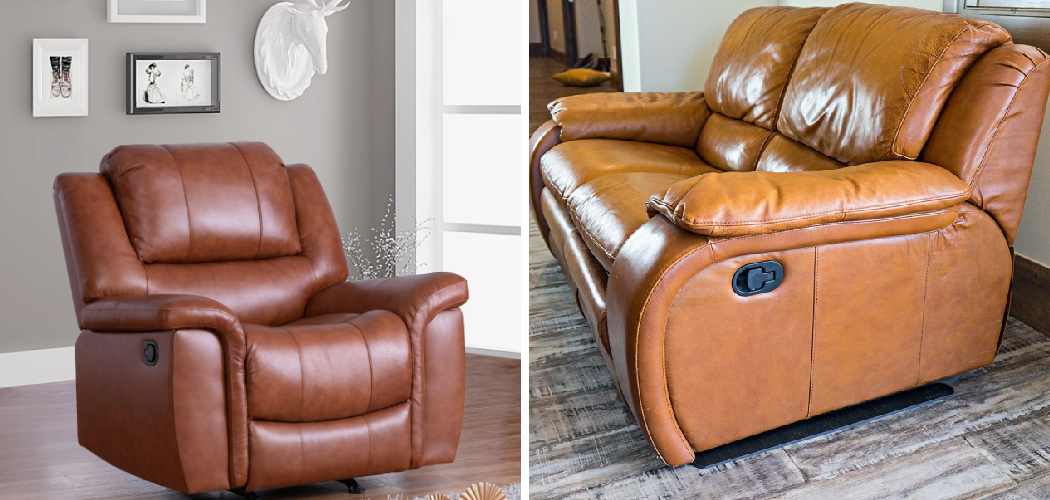Recliners are a wonderful addition to any living space, offering comfort and relaxation. However, one common issue many people face is their recliner sliding on carpeted floors. This can be both annoying and potentially hazardous. A sliding recliner not only disrupts your relaxation but also risks damaging the carpet and the floor underneath. Moreover, the constant movement can lead to instability, increasing the likelihood of accidents. Fortunately, there are several effective solutions to address this problem.
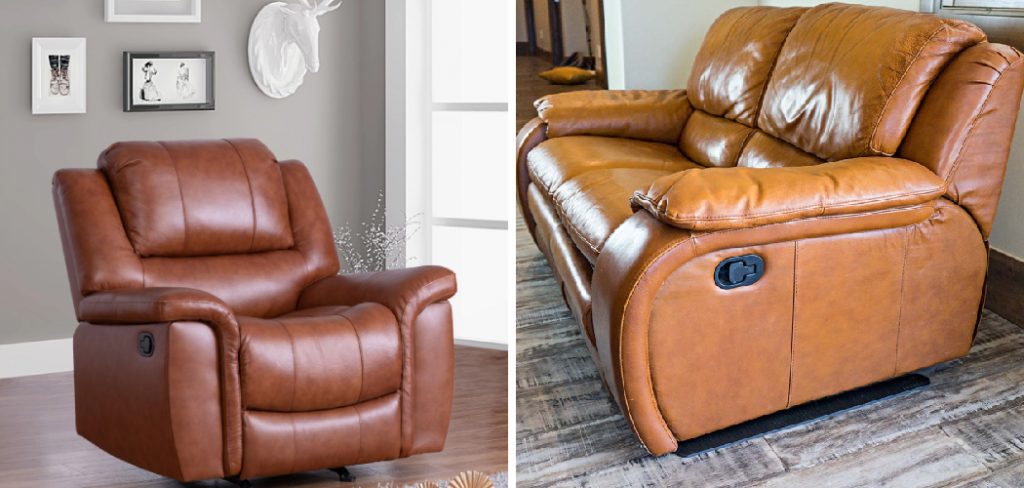
In this article, we will explore various methods on how to keep recliner from sliding on carpet, ensuring you can enjoy your relaxation time without any interruptions. From using non-slip pads to rearranging your furniture layout, we’ve got you covered with practical and accessible tips to keep your recliner stationary and secure.
Understanding the Problem
Why Recliners Slide
Recliners often slide on carpet due to several factors, such as weight distribution, movement during use, and the type of carpet. The uneven distribution of weight, particularly when the recliner is extended, can cause the chair to become unstable and move across the carpet.
Additionally, the repetitive actions of sitting down, getting up, and reclining can gradually shift the recliner’s position. The type of carpet also plays a significant role; for instance, low-pile carpets provide less resistance against movement compared to high-pile carpets. A sliding recliner’s potential risks and inconveniences include possible damage to the carpet and flooring, disruptions to your comfort, and the increased likelihood of accidents due to instability.
Assessing Your Recliner and Carpet
Before implementing any solutions, it is crucial to assess the base of your recliner and the texture of your carpet. Examine the recliner’s base for any uneven surfaces or worn-out parts that could contribute to its instability. Understanding the type of carpet you have is also essential, as different textures interact with furniture in various ways.
Plush carpets, with their soft and thick fibers, can create more friction, reducing movement, whereas low-pile carpets tend to be smoother and can lead to more sliding. On the other hand, high-pile carpets offer even more resistance but may also pose challenges in maintaining consistent stability. Conducting a thorough assessment will help you choose the most effective solution to keep your recliner stationary.
How to Keep Recliner from Sliding on Carpet: Non-Slip Pads and Grippers
One of the most effective ways to prevent your recliner from sliding on the carpet is to use non-slip pads and grippers. These products are designed to increase friction between your furniture and the carpet, ensuring your recliner stays in place. Here’s how to choose and install the right non-slip pads and explore alternative grippers for added stability.
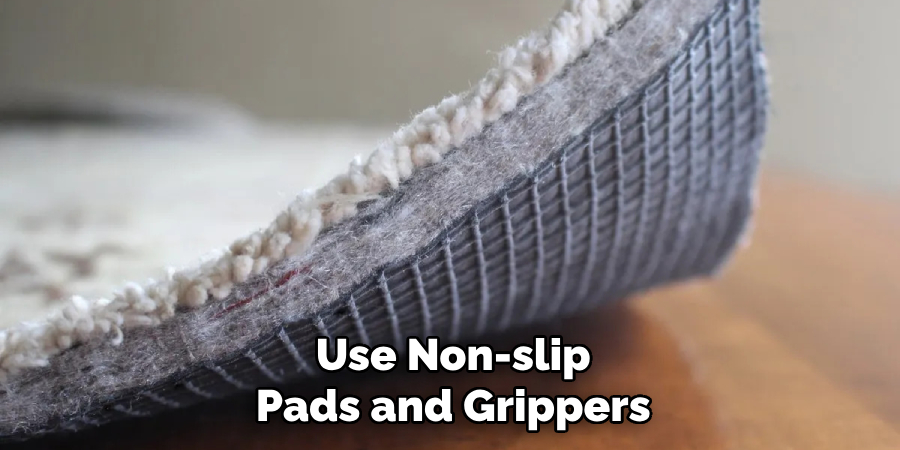
Choosing the Right Non-Slip Pads
Types of Non-Slip Pads Available
When it comes to non-slip pads, there are several types to consider:
- Rubber Pads: These provide excellent grip and are great for most recliners. They’re particularly effective on low-pile carpets.
- Felt Pads: These are softer and less abrasive, making them suitable for high-pile carpets, as they won’t damage the carpet fibers.
- Combined Materials: Some non-slip pads are made of both rubber and felt, offering a balance of grip and gentleness.
How to Select the Best Pad Based on Your Recliner and Carpet Type
To choose the best non-slip pad, consider both your recliner and your carpet type. For heavier recliners, rubber pads may provide the best stability. If your carpet is high-pile or plush, a combined material might offer sufficient grip without harming the carpet. Check the weight capacity of the pads and ensure they are designed for your type of flooring.
Installing Non-Slip Pads
Step-by-Step Guide to Properly Install Non-Slip Pads Under Your Recliner
- Clean the Recliner’s Base and Carpet: Ensure both surfaces are clean and free from dust. This will help the pads adhere properly.
- Measure the Base of the Recliner: Determine the size and shape of the base to select pads of the appropriate size.
- Place the Non-Slip Pads: Attach the pads directly to the reclining mechanism’s legs or the base. Remove the backing and press firmly onto the surface if the pads are adhesive.
- Test the Recliner: Sit and recline in the chair to check for stability. Adjust the placement of the pads if necessary.
Tips for Ensuring Maximum Adhesion and Effectiveness
- Ensure surfaces are completely dry before application.
- Apply consistent pressure to the pads for about 30 seconds to secure them in place.
- Periodically check the pads to ensure they haven’t shifted or worn out.
Alternative Grippers
Discuss Other Gripper Options Like Furniture Cups or Adhesive Strips
Aside from non-slip pads, other gripper options include:
- Furniture Cups: These are placed under the furniture legs and provide a sturdy grip on the carpet. They’re ideal for heavy recliners.
- Adhesive Strips: These can be stuck directly to the carpet and the recliner base, offering a strong bond to prevent movement.
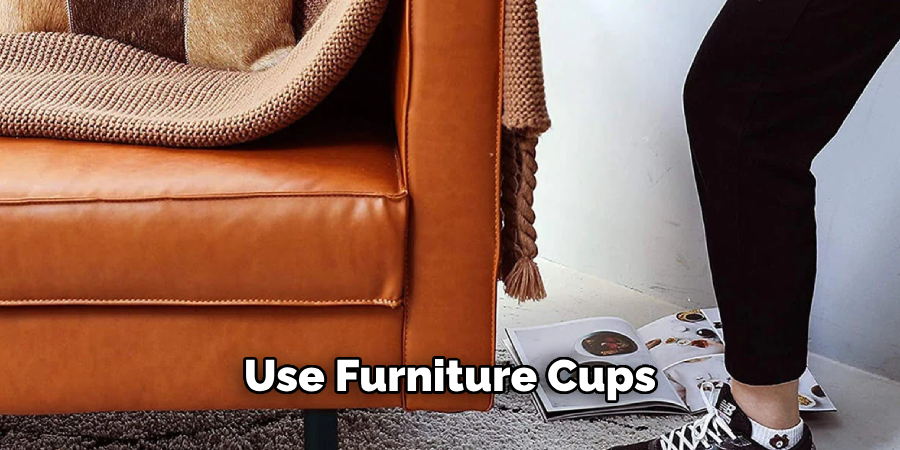
How to Use These Alternatives to Achieve Similar Results
- Furniture Cups: Place the cups under each leg of the recliner, ensuring they cover the entire contact area for maximum grip.
- Adhesive Strips: Cut the strips to size, remove the backing, and firmly press them onto the carpet. Place the recliner’s legs on top of the adhesive areas.
By effectively choosing and installing the right non-slip pads or alternative grippers, you can ensure your recliner remains stationary, providing a stable and secure seating experience.
How to Keep Recliner from Sliding on Carpet: Using Rug Pads and Carpets
Benefits of Using a Rug Pad
Rug pads are an excellent solution to enhance the grip and stability of your recliner. They function by adding a layer of cushioning between your carpet and the recliner, which increases friction and prevents unwelcome movement. In addition to providing grip, rug pads protect your carpet from wear and tear caused by the recliner’s weight and movement. Different types of rug pads are available, each offering unique benefits:
- Thick Felt Rug Pads: These are ideal for plush, high-pile carpets as they provide a dense and cushioned grip without damaging the carpet fibers.
- Rubber Rug Pads: These work well on low-pile carpets, offering a stronghold and preventing any slippage.
- Combined Felt and Rubber Pads: Combining the benefits of both materials, these rug pads deliver excellent grip while being gentle on your carpet. They are versatile and suitable for both low and high-pile carpets.
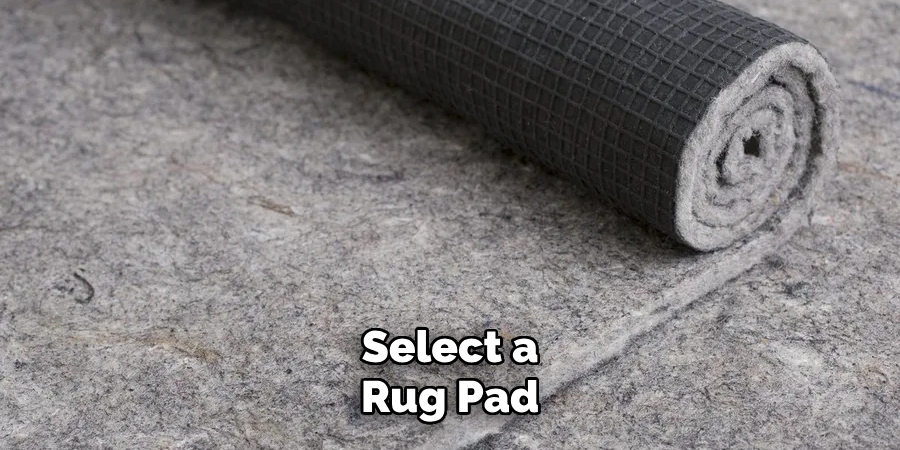
Installing a Rug Pad
Selecting and installing the right rug pad involves a few simple steps to ensure effectiveness and a secure fit:
- Choose the Appropriate Rug Pad: Based on your recliner and carpet type, select a rug pad that offers the best combination of grip and cushioning.
- Measure Your Recliner’s Base: Determine the dimensions of your recliner’s base, including the legs, to ensure the rug pad will cover the entire contact area.
- Cut the Rug Pad to Size: Using a pair of scissors or a utility knife, trim the rug pad to match the measurements of the recliner’s base. Allow a slight margin to ensure complete coverage.
- Place the Rug Pad Under the Recliner: Lay the rug pad on the carpet where your recliner typically rests. Ensure it is centered and positioned correctly before placing the recliner on top.
- Test for Stability: Once the recliner is placed on the rug pad, sit and recline to check for any movement. Adjust the pad if necessary for optimal stability.
Layering with Additional Rugs
Adding an extra rug or mat under your recliner can significantly reduce sliding and enhance stability. Here’s how to maximize this approach:
- Choose a Secondary Rug: Select a rug that complements your carpet and is durable enough to handle the weight of the recliner. The rug should be large enough to fit under the recliner completely.
- Position the Rug Correctly: Place the secondary rug or mat directly under the recliner, making sure it is centered. This creates an additional layer of friction between the recliner and the carpet.
- Secure the Rug: Consider using rug tape or an additional gripper under the secondary rug for added stability. This will prevent any movement or bunching that could occur with regular use.
By using rug pads and layering with additional rugs, you can achieve a stable, secure, and comfortable seating experience, ensuring your recliner stays firmly in place.
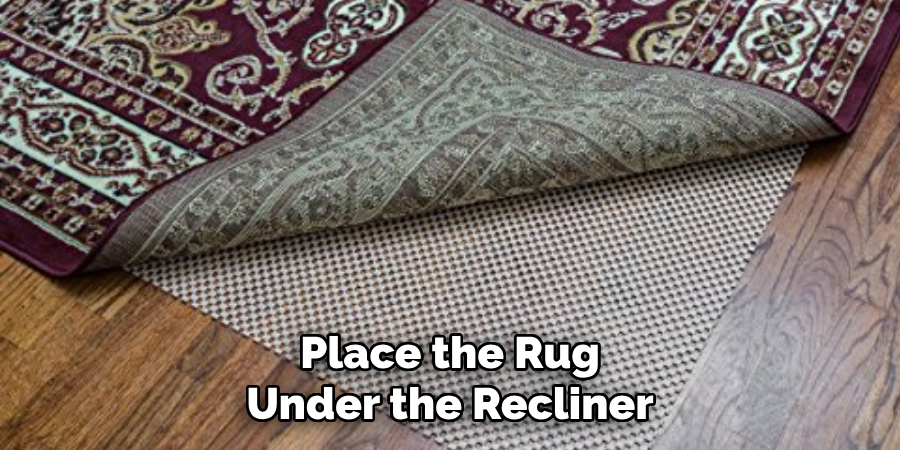
Adjusting Recliner Feet and Legs
Checking Recliner Feet
Inspecting and maintaining the feet or legs of your recliner is crucial for ensuring both stability and safety. Over time, the legs can wear out or become damaged, weakening their grip on the carpet and potentially causing the recliner to slide or become unstable. Regular checks can help identify worn-out feet that need adjustments or replacements to restore their effectiveness. Replacing worn-out feet involves removing the old ones and attaching new, sturdier replacements. Ensuring that the new feet are properly aligned and secured can significantly enhance the recliner’s grip on the carpet, providing a safer and more comfortable seating experience.
Adding Rubber Feet or Caps
Adding rubber feet or caps to the recliner legs is a simple and effective way to prevent sliding and protect your carpet. Here’s a step-by-step guide to achieve this:
- Measure and Purchase: Measure the diameter of the recliner’s legs and purchase appropriate rubber feet or caps from a hardware store.
- Prepare the Recliner: Lift or tilt the recliner to access its legs. Cleaning the base of each leg ensures maximum adhesion.
- Attach Rubber Feet or Caps: Slide the rubber caps over the recliner’s legs or attach the adhesive rubber feet directly. Press firmly to ensure they are secure.
- Test Stability: Place the recliner back in position and test for stability. Make adjustments if the rubber feet or caps are not firmly gripping the carpet.
Rubber feet offer numerous benefits, including increasing friction to prevent sliding and shielding the carpet from the pressure and potential wear caused by the recliner’s legs.
DIY Solutions
For a quick and cost-effective alternative, consider simple DIY methods like using double-sided tape or Velcro strips to stabilize your recliner. Double-sided tape can be placed on the base of each leg, providing additional grip and reducing movement. Velcro strips can be attached to both the recliner legs and the carpet, forming a strong bond that prevents slippage.
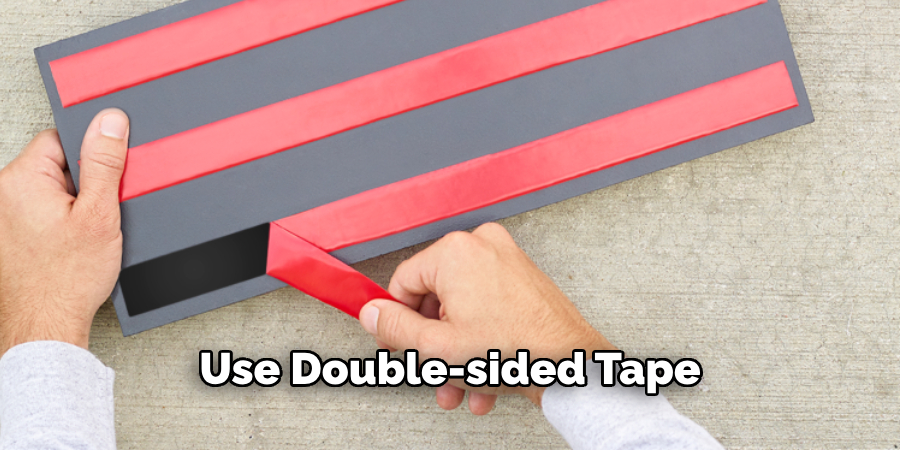
Pros and Cons of DIY Solutions versus Store-bought Products:
- Pros: DIY solutions are usually less expensive, easily accessible, and quick to implement. They offer a level of customization that can accommodate immediate needs.
- Cons: DIY solutions may not be as durable or effective as store-bought products in the long run. They might require more frequent adjustments or replacements to maintain their effectiveness.
By regularly checking and adjusting the feet or legs of your recliner and utilizing effective solutions like rubber caps or simple DIY methods, you can ensure your recliner remains stable and your carpet stays protected.
Conclusion
Learning how to keep recliner from sliding on carpet involves several straightforward yet effective steps. Start by investing in high-quality rug pads, such as felt or rubber, to provide a strong grip and prevent any slippage. Measuring your recliner’s base ensures you cut the rug pad to the correct size for full coverage. Layering with additional rugs can further enhance stability by adding friction between the recliner and carpet.
Regular checks and adjustments to the recliner feet or legs are crucial. Replacing worn-out feet and adding rubber caps can increase friction and protect your carpet. For those seeking quick fixes, DIY solutions like double-sided tape or Velcro strips offer an immediate grip, albeit with potentially less durability.
By implementing these measures, you can ensure your recliner remains securely in place, providing a stable and comfortable seating experience while preserving the condition of your carpet.
